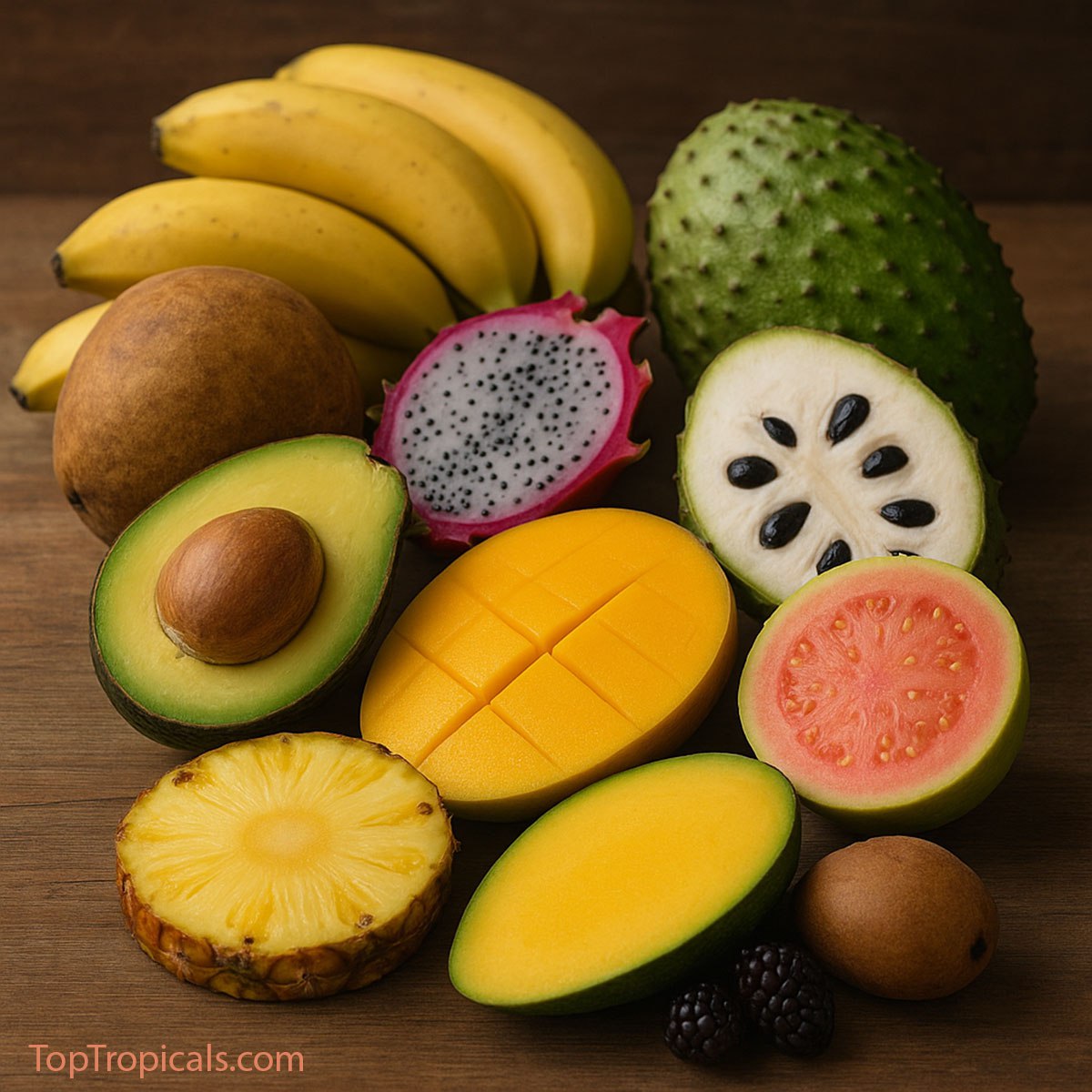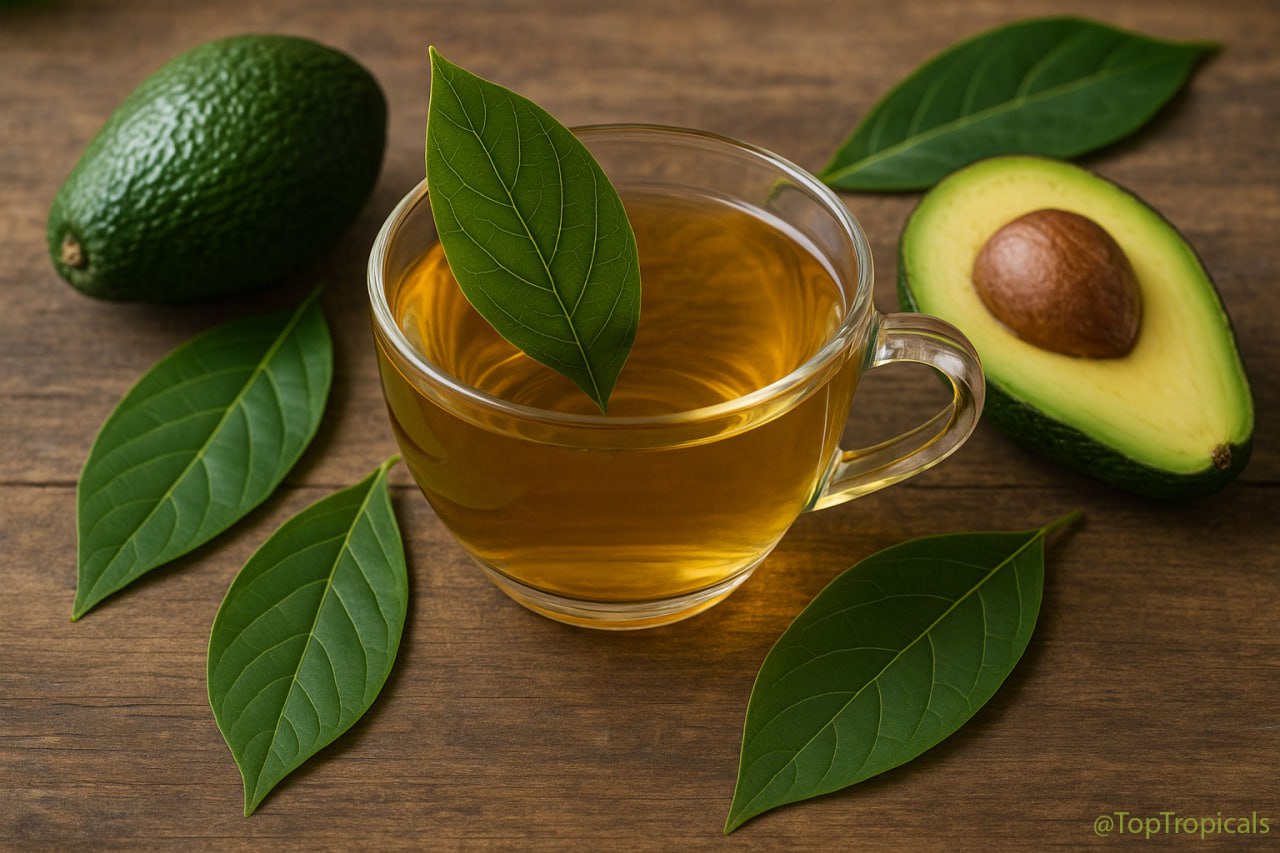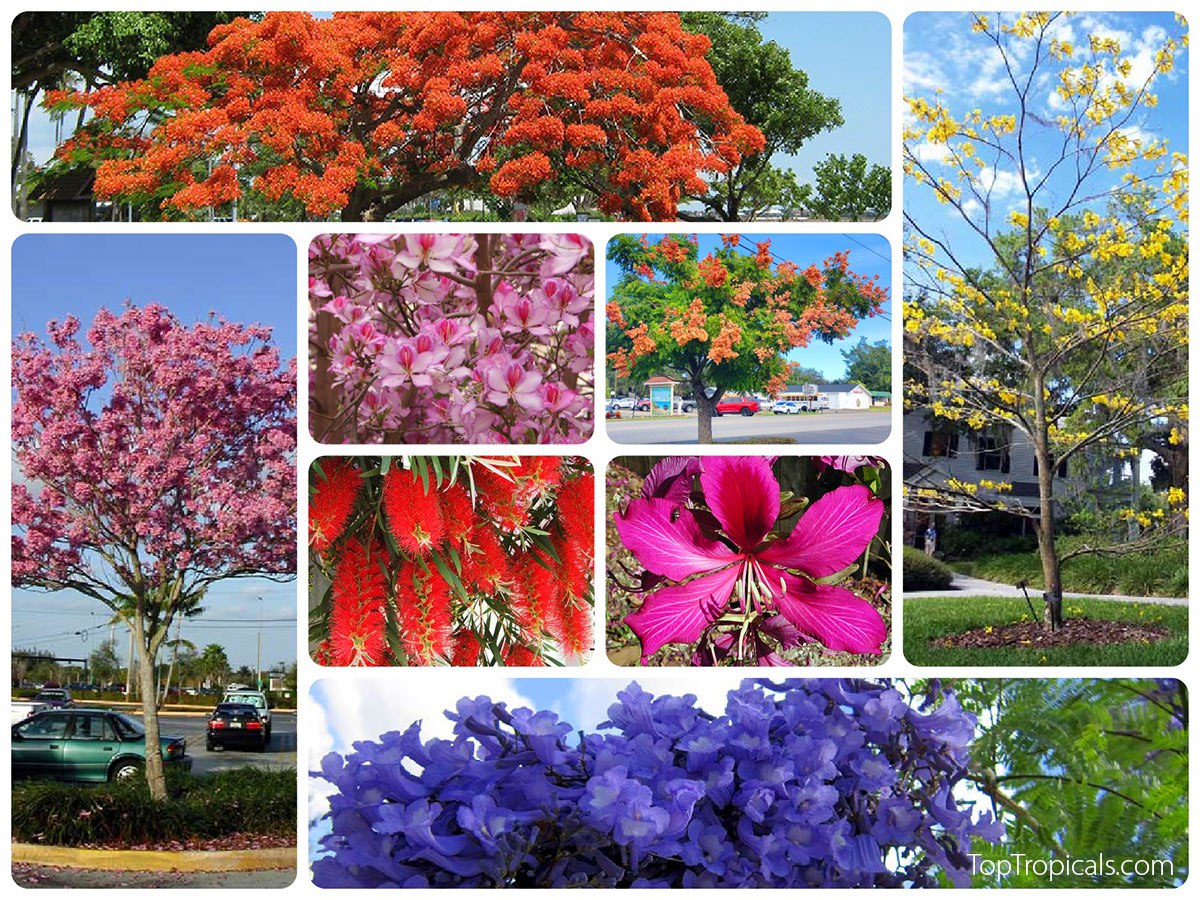Garden Blog - Top Tropicals
Plant a fruit tree - and breathe easier: fruit might be the surprising key to healthier lungs
Fresh fruit doesn’t just taste good - it can literally help you breathe better!
A new study presented at the European Respiratory Society Congress found that women who ate at least four portions of fruit a day had slower declines in lung function compared to those who ate less. Researchers believe antioxidants in fruit may help protect the lungs from the damaging effects of air pollution.
Air pollution is everywhere, and more than 90% of people worldwide are exposed to levels above safe limits. But the good news is, your diet can make a difference. Fruits are packed with antioxidants and anti-inflammatory compounds that help your body fight off the oxidative stress caused by tiny airborne particles.
The study showed that women who ate plenty of fruit had stronger lungs despite being exposed to fine particulate pollution (PM2.5) from cars and industry. The difference wasn’t small either - their lung capacity dropped significantly less over time than in those with low fruit intake.
So planting fruit trees isn’t just about homegrown flavor or saving a trip to the store. It’s about protecting your health in a polluted world. Whether it’s mangoes, avocados, guavas, or starfruit, every harvest brings you cleaner nutrition and a cleaner breath of life.
🛒 Grow fruit - grow your health
📚 Learn more:
- ▫️11 tropical fruits to eat instead of taking a fiber supplement
- ▫️Tropical fruit health benefits guide - what fruit and edibles can help with health issues and vitamin deficiencies, Part 1 and Part 2.
- ▫️Five best fruit trees to plant in Summer
- ▫️10 best fruit trees to grow in Florida and Southern landscapes
- ▫️Top 10 fruiting plants you'll ever need for your health benefits
#Food_Forest #Remedies #Discover
🟢 Join 👉 TopTropicals
Guava beats banana in the potassium game
- 🍉Everyone talks about bananas when it comes to potassium, but guava (Tropical Guava - Psidium guajava) quietly beats them! One cup of guava packs around 688 milligrams of potassium, compared to about 450 in a banana!
- 🍉Potassium is essential for strong bones, steady blood pressure, muscle function, and a healthy nervous system. Adults need between 2,600 and 3,400 mg daily, according to the National Institute of Health - so adding guava to your fruit bowl is a smart move.
- 🍉Guavas are common across the tropics - from Mexico to the Caribbean - with green or yellow skin and beautiful pink or off-white flesh. Sweet, aromatic, and easy to grow in warm climates, guava is one tropical fruit that truly earns its place in the garden and on your plate.
🛒 Your body needs potassium - your garden grows it on guava tree!
📚 Learn more:
- ▫️Six guava varieties that will keep you picking year-round
- ▫️How to grow a Guava Tree: Practical Guide to Growing Guava
- ▫️More about #Guava
#Food_Forest #Guava #Discover
🟢 Join 👉 TopTropicals
11 tropical fruits to eat instead of taking a fiber supplement
- When we think of tropical fruit, we picture sweetness, sunshine, and exotic flavors packed with vitamin C. But beneath all that juicy goodness lies another gift: dietary fiber - quietly working to support digestion, feed the gut microbiome, and help keep blood sugar steady.
- Avocado leads the pack among tropical fruits for fiber content. One creamy, ripe fruit can provide around 10 grams of fiber, roughly a third of an adult’s daily need. And there’s more to avocado than fiber - it’s also rich in healthy fats, micronutrients, and that silky texture everyone loves.
- Other tropical fruits bring their own kind of fiber strength. Guava delivers up to 9 grams per cup, plus a burst of vitamin C.
- Mango offers about 3 grams in half a fruit, especially when eaten with some of the skin.
- Pineapple, though not always seen as a fiber powerhouse, still contributes around 2 grams per cup, along with bromelain, the enzyme that helps digestion.
- Jackfruit’s fibrous pulp makes it another standout - it’s so meaty, it’s even used as a plant-based substitute in savory dishes.
- Sapote fruit (Mamey, Canistel) and Sapodilla add fiber with a smooth, custard-like texture.
- Adventurous tropical varieties like Annona (custard apple, soursop) may not top the charts in fiber numbers, but their soft, fibrous flesh still adds value: about 1.3 grams of fiber per 100 grams of fruit.
- Bananas contain both soluble and insoluble fiber; the soluble part (mainly pectin) helps control blood sugar and appetite, while the insoluble fiber aids regularity.
- Mulberries are rich in insoluble fiber, especially in their skin, supporting digestion and promoting healthy bowel movements.
- Dragon fruit offers a mix of soluble fiber in its juicy flesh and insoluble fiber from its tiny edible seeds, which help support gut health and feed good bacteria.
These fruits aren’t just delicious - they help you meet your daily fiber needs in ways that are far more enjoyable (and sustainable) than taking supplements. And when home gardeners, farmers, or tropical communities grow and share them, it’s a double win: nutrition and tradition hand in hand.
✔️ Tropical fiber power: tips for getting more fiber from tropical fruits
- ⏺Eat whole, not juiced. Most of the fiber is in the pulp, skin, and seeds. Juicing removes much of that goodness.
- ⏺Mix it up. Tropical fruits are great, but balance them with legumes, whole grains, nuts, and veggies for a full fiber range.
- ⏺Take it slow. If your diet is low in fiber, increase gradually to avoid bloating or discomfort.
- ⏺Drink plenty of water. Fiber works best when paired with hydration.
- ⏺Mind the ripeness. Unripe fruits can have more resistant starch, another form of fiber.
- ⏺Get creative. Toss tropical fruits into smoothies, salsas, breakfast bowls, or even desserts - a tasty stealth-fiber strategy.
🛒 Plant a fruit tree to harvest your fruit tomorrow
📚 Learn more:
Tropical fruit health benefits guide - what fruit and edibles can help with health issues and vitamin deficiencies, Part 1 and Part 2.
#Food_Forest #Remedies #Discover #How_to
🟢 Join 👉 TopTropicals
Avocado leaf tea: island secret for a calm heart and blood pressure
🍃 You see that Avocado tree in your yard? Don't just love it for the fruit - the leaves carry magic too! Old folks in the tropics will tell you - never throw away the avocado leaves. They’ve been used for generations to brew a tea that helps steady the heart and ease high blood pressure.
🍃 When life gets busy and your heart starts beating too fast, this tea helps it find its rhythm again. The leaf holds flavonoids and quercetin - fancy words for what nature been doing all along: keeping the blood flowing smooth and the body at peace. Folks say it also helps with digestion and keeps the liver happy.
🍃 Avocado leaf tea
Ingredients
- 3 to 4 fresh avocado leaves
- 2 cups water
- Optional: honey, lemon, or cinnamon stick
Instructions
- Rinse the avocado leaves well.
- Place them in a small pot with 2 cups of water.
- Bring to a gentle simmer and let it cook for about 10 minutes.
- Strain the tea and add honey, lemon, or cinnamon if desired.
- Sip slowly and enjoy the calm, earthy flavor.
- 🍃 They say it helps the belly, calms the mind, and keeps the liver strong. Maybe that’s science, maybe it’s just island truth - but it surely does the body good! Some call it bush medicine, others just call it good sense. Either way, it’s a simple garden remedy that’s been soothing hearts long before pills and prescriptions came around.
🛒 Plant an Avocado tree and help your body stay healthy
📚 Learn more:
Tropical fruit and plants that help keep blood pressure in balance, Part 1, and Part 2.
#Food_Forest #Remedies #Discover #How_to
🟢 Join 👉 TopTropicals
Yes, you can grow a tropical fruit tree in a pot!
🍒 If you dream of picking fresh tropical fruit - Mango, Avocado, exotiс Annona and more - but only have a patio, balcony, or small yard, you’re not out of luck. Many tropical fruit trees grow perfectly well in large containers. The key is choosing the right variety, pot, and care routine.
🍒 Pick a compact tree type
🍒 Choose the right pot
🍒 Soil and watering
🍒 Light and feeding
🍒 Cold protection and pruning
Start with a dwarf or semi-dwarf variety. Regular tropical trees can grow huge, but container-sized cultivars stay under 8–10 feet and are much easier to manage. For example, Condo varieties of Mango like Pickering or Ice Cream stay small and still produce full-sized fruit. The same goes for Dwarf Avocados like Wurtz (also called Little Cado) and Sugar apples. Blackberry Jam fruit tree (Randia formosa) and Peanut Butter Fruit tree (Bunchosia argentea) are also excellent choices.
Begin with a 5-gallon container and move up as the tree grows. A mature plant will be happy in a 20–25-gallon pot. Drainage is critical - roots will rot if the pot stays soggy. Use a sturdy plastic, ceramic, or wooden container with multiple holes in the bottom.
These trees all like loose, well-draining soil. Mix potting soil with perlite or pine bark for better aeration. Water deeply but not too often - let the top few inches dry before watering again. Overwatering is the quickest way to kill a potted tropical.
Full sun is a must - aim for at least 6 hours daily. Fertilize during the growing season with a balanced fruit tree or slow-release fertilizer like Green Magic or liquid Sunshine Boosters. Many tropicals appreciate an extra boost of micronutrients like iron and magnesium to keep their leaves green.
If you live where winters get chilly, move the pot indoors or into a greenhouse before frost. Prune lightly in spring to keep shape and airflow. Container trees can fruit heavily if given light, warmth, and consistent care.
At the end of the day, container culture lets you grow the tropics anywhere - from a city balcony to a backyard deck.
➡ Next: The best tropical fruit trees for containers...
📸 Growing and fruiting Soursop in apartment (PDF download)
🛒 Explore tropical fruit trees
#Food_Forest #How_to #Discover
🟢 Join 👉 TopTropicals







